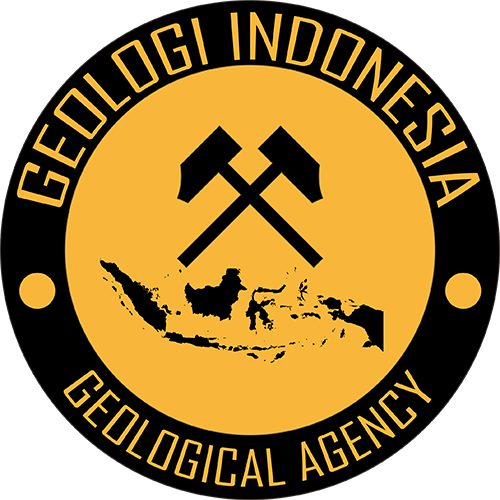Producing Basin
Basin Status
Rifting Valley Back Arc
Tectonic Setting
0
Area (km2)
0
Visitor Count
0
Likes
Executive Summary
of
Serayu Utara Basin
Description
Version
1
Published Date
20 Jan 2023
Uploaded Date
-
Photos
Some footage of Serayu Utara Basin
Introduction
Preliminary details of Serayu Utara Basin
The North Serayu Basin study was carried out in the Kebumen and Banjarnegara areas (Karanggulung and surrounding areas) by the Geological Survey Center in 2020.
Data based on:
20 Jan 2023
Exploration History
Detailed history of Serayu Utara Basin
There are three data wells around Banjarnegara, in the Banyumas area, but only two wells can be used which are then analyzed as approaches and analogies for this Banjarnegara area. The Jati–1 well is in the Banyumas Block, drilled by Lundin Banyumas B.V. with the classification of the well as an exploration well. Drilling started on 5 September 1974 and reached TD (Total Depth) at 4487.6 meters on 16 May 2006 with oil and gas spots. The Karangnangka-1 well is located in the Banyumas block, drilled by Pertamina UEP III, with the well classified as an exploration well. Drilling began on December 1, 1993 and reached a TD (Total Depth) of 891 meters on January 16, 1994. The status of the Karangnangka-1 well is plugged and abandoned on March 12, 1994. The Karanggedang-1 well is in the Banyumas block, drilled by Pertamina UEP III, with the classification of the well as an exploration well. Drilling began on 22 September 1993 and reached a TD (Total Depth) of 1800 meters on 20 October 1991. The status of the Karanggedang-1 well was plugged and abandoned on 25 October 1993.
Data based on:
20 Jan 2023
Regional Geology
Detailed regional geology of Serayu Utara Basin
From a tectonostratigraphic perspective, one of the rocks that has the potential to become source rock in the North Serayu Basin is Eocene sedimentary rock. These rocks are not exposed much in Banjarnegara because they are covered by thick Tertiary volcanic sediments. The Eocene sedimentary rocks are fairly well exposed in southern area of Banjarnegara, namely in Karanggulung (Karanggulung Formation). Remote sensing interpretation uses Landsat TM (2001) optical data and Palsar (2009) radar images to verify structural features. The main structural features show a W-E and NW-SE orientation, especially as a folding system and thrust faulting. Some minor features are also observed, such as NNW-SSE trending normal fault and NE-SW thrust fault. The distribution of lithology shows the same orientation as the structural tendency (LAPI ITB, 2011).The gravity data used in this study comes from the Geological Survey Center's gravity database with observation point intervals between 2000 meters and 3000 meters. The number of gravity points associated with the study area is 520 points, with the data distribution spread over the entire study area. The steps taken such as selection of data based on suitability between one to another, data processing with Oasis Montaj to obtain some gravity anomaly contours, residual gravity anomaly contours, second vertical derivative gravity anomaly contours, and Bouguer anomaly cross section, subsurface geological modeling to get an overview of the subsurface geology of the study area. In carrying out geological modeling based on gravity data related to zoning of oil and gas potential, generally acceptable stages are needed. These stages are determining the type of fault and the depth of the sedimentary basin on the trajectory of the gravity anomaly which will be used as a subsurface geology model. In determining the type of fault, the second vertical derivative (SVD) process is carried out from the gravity anomaly data, which shows that from the north to south it shows an upward fault. Meanwhile, to determine the depth of the sediment layer, with the same trajectory to determine the type of fault, a spectral analysis process was carried out and a depth of 5757.34 meters was obtained.
Data based on:
20 Jan 2023
Petroleum System
Detailed petroleum system of Serayu Utara Basin
Reservoir potential is available in the Neogene and Paleogene intervals. Eocene sandstones with Paleogene grabens and sandstone units from the Rambatan, Halang, and Tapak Formations of Neogene age have the most potential as reservoirs. Laboratory analysis was performed to measure the reservoir in each sample although none of the Paleogene samples. Many of the Neogene units were heavily influenced by Miocene volcanic activity (LAPI ITB, 2011). The potential for overburden is above the Rambatan Formation, claystone of the Upper Tapak Formation, and sediments from the Totogan Formation or older. The upper part of the Rambatan Formation consists of alternating claystone and sandstone. The claystone units in the thick formations of each stratigraphic sequence are also considered to have cover capabilities.
Data based on:
20 Jan 2023
Resources
Detailed resources of Serayu Utara Basin
-
Data based on:
20 Jan 2023
Petroleum System Chart
of
Serayu Utara Basin
Description
Version
-
Published Date
-
Uploaded Date
-
Petroleum System Chart
Petroleum system chart to Serayu Utara Basin
Montage
of
Serayu Utara Basin
Description
Version
-
Published Date
-
Uploaded Date
-
Montage
Detailed montage of Serayu Utara Basin
Reports & Publications
of
Serayu Utara Basin
Description
Version
1
Published Date
-
Uploaded Date
20 Jul 2023
Reports & Publications PDF
The PDF displayed is only pages 1 to 20. For a complete PDF, you can download it by clicking the download button.
Archives of Report & Publication
| Date | Report Description | Version | Doc | |
| 01 Nov 2021 | Rekomendasi Wilayah Keprospekan Migas Banjarnegara | 1 | Download PDF |
| Date | Publication Description | Version | Doc | |
| Oct 03, 2022 | Jurnal Cekungan Serayu Utara Tahun 2022 | 2.0 | Download | |
| Oct 05, 2021 | Jurnal Cekungan Serayu Utara Tahun 2021 | 2.0 | Download | |
| Oct 03, 2020 | Jurnal Cekungan Serayu Utara Tahun 2020 | 1.0 | Download | |
| Oct 08, 2019 | Jurnal Cekungan Serayu Utara Tahun 2019 | 2.0 | Download | |
| Oct 07, 2018 | Jurnal Cekungan Serayu Utara Tahun 2018 | 1.0 | Download | |
| Oct 04, 2017 | Jurnal Cekungan Serayu Utara Tahun 2017 | 2.0 | Download | |
| Oct 02, 2016 | Jurnal Cekungan Serayu Utara Tahun 2016 | 2.0 | Download | |
| Oct 07, 2015 | Jurnal Cekungan Serayu Utara Tahun 2015 | 2.0 | Download | |
| Oct 04, 2014 | Jurnal Cekungan Serayu Utara Tahun 2014 | 2.0 | Download | |
| Oct 08, 2013 | Jurnal Cekungan Serayu Utara Tahun 2013 | 2.0 | Download | |
| Oct 05, 2012 | Jurnal Cekungan Serayu Utara Tahun 2012 | 1.0 | Download |


